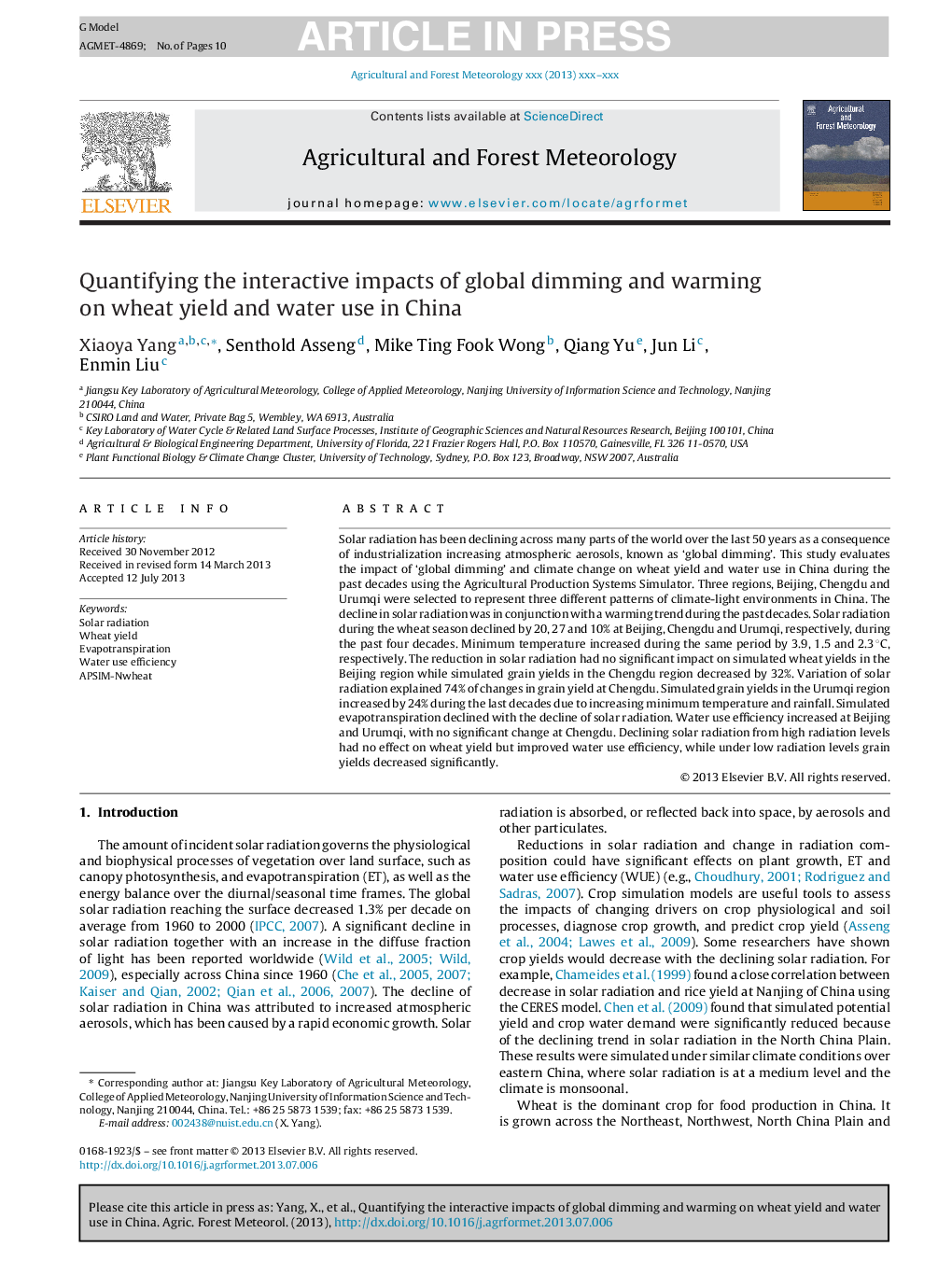| Article ID | Journal | Published Year | Pages | File Type |
|---|---|---|---|---|
| 6537773 | Agricultural and Forest Meteorology | 2013 | 10 Pages |
Abstract
Solar radiation has been declining across many parts of the world over the last 50 years as a consequence of industrialization increasing atmospheric aerosols, known as 'global dimming'. This study evaluates the impact of 'global dimming' and climate change on wheat yield and water use in China during the past decades using the Agricultural Production Systems Simulator. Three regions, Beijing, Chengdu and Urumqi were selected to represent three different patterns of climate-light environments in China. The decline in solar radiation was in conjunction with a warming trend during the past decades. Solar radiation during the wheat season declined by 20, 27 and 10% at Beijing, Chengdu and Urumqi, respectively, during the past four decades. Minimum temperature increased during the same period by 3.9, 1.5 and 2.3 °C, respectively. The reduction in solar radiation had no significant impact on simulated wheat yields in the Beijing region while simulated grain yields in the Chengdu region decreased by 32%. Variation of solar radiation explained 74% of changes in grain yield at Chengdu. Simulated grain yields in the Urumqi region increased by 24% during the last decades due to increasing minimum temperature and rainfall. Simulated evapotranspiration declined with the decline of solar radiation. Water use efficiency increased at Beijing and Urumqi, with no significant change at Chengdu. Declining solar radiation from high radiation levels had no effect on wheat yield but improved water use efficiency, while under low radiation levels grain yields decreased significantly.
Related Topics
Physical Sciences and Engineering
Earth and Planetary Sciences
Atmospheric Science
Authors
Xiaoya Yang, Senthold Asseng, Mike Ting Fook Wong, Qiang Yu, Jun Li, Enmin Liu,
